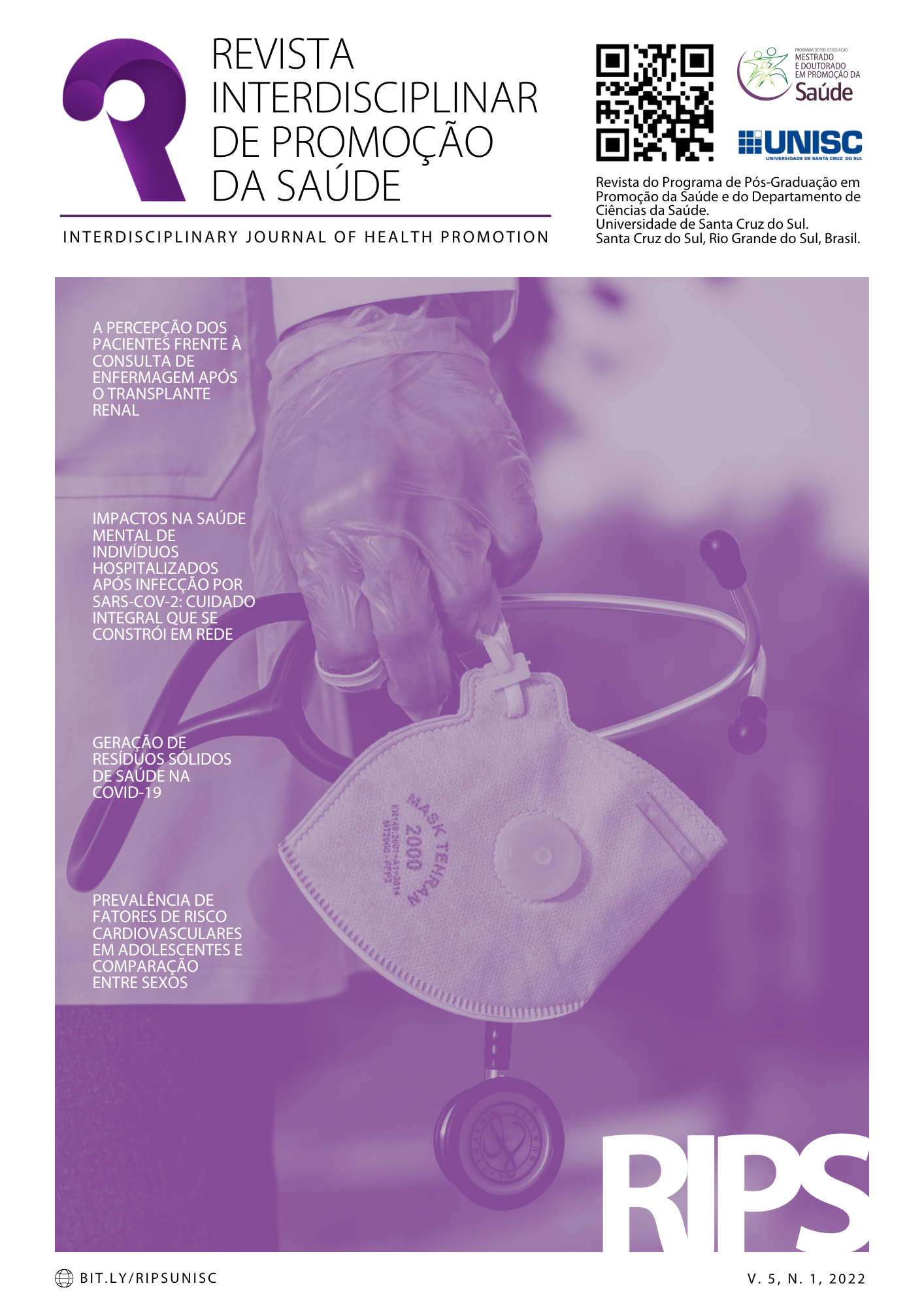Prevalence of cardiovascular risk factors in adolescents and comparison between sexes
DOI:
https://doi.org/10.17058/rips.v5i1.17568Abstract
ABSTRACT:
Objective: to describe and compare the prevalence of risk factors for cardiovascular disease in adolescents, according to sex. Method: cross-sectional study with elementary school students, aged between 12 and 13 years old, enrolled in a public school in São José do Rio Preto, SP. The following instruments were used for data collection: physical activity questionnaire for adolescents (FAQ), anthropometric data (weight, height, body mass index (BMI) and waist circumference), in addition to the six-minute walk test (6MWT)). The investigated outcomes were insufficient levels of physical activity, excess body weight and low functional capacity. Results: sixty-four adolescents were analyzed, 32 of each sex. The most prevalent cardiovascular risk factor was low functional capacity (76%), followed by insufficiently active level (59%). When comparing the sexes, it was found that low functional capacity was the most prevalent factor in both males (72%) and females (75%). Female adolescents had higher mean BMI (p=0.01) and waist/height ratio (p<0.001) and walked a shorter distance (p=0.03) in the 6MWT than male adolescents. Conclusion: it was observed that low functional capacity was the most prevalent risk factor, regardless of gender. Insufficient levels of physical activity were more prevalent in male adolescents and excess body weight was higher in female adolescents.
Keywords: Adolescent; Risk factors; Cardiovascular diseases; Physical activity.
Downloads
Downloads
Published
How to Cite
Issue
Section
License
A submissão de originais para este periódico implica na transferência, pelos autores, dos direitos de publicação impressa e digital. Os direitos autorais para os artigos publicados são do autor, com direitos do periódico sobre a primeira publicação. Os autores somente poderão utilizar os mesmos resultados em outras publicações indicando claramente este periódico como o meio da publicação original. Em virtude de sermos um periódico de acesso aberto, permite-se o uso gratuito dos artigos em aplicações educacionais e científicas desde que citada a fonte conforme a licença CC-BY da Creative Commons.




